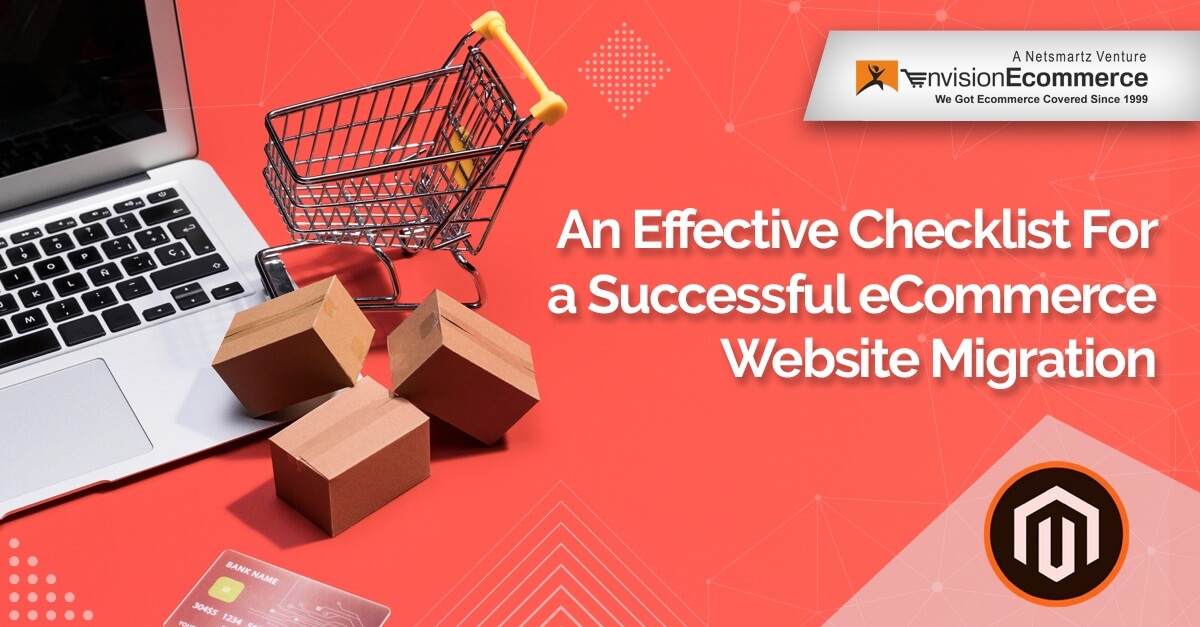An Effective Checklist for a Successful eCommerce Website Migration
-
 Nidhi Arora
Nidhi Arora
- 5 years

If your eCommerce business has outgrown your existing platform and you have planned to migrate to a superior platform, it’s not uncommon. Several companies initiated their business presence by hosting their portal on-site. Sooner or later, they required themselves with a great need of numerous workers and a customized system. Practical constraints result in slowdowns, breakdowns, and lost profits or revenue. eCommerce website migration is quite dissimilar to regular site migration. It is much riskier as a defective or flawed eCommerce site will just ruin your business. The most definite signs of difficulty cover a growing client base and staff turnover. And, no one desires to reside on a sinking ship.
eCommerce site migration is not as simple as you think. It requires some severe preparations and considerations, generally takes the planning of months in advance. But you must have to follow this migration if you’re serious for your business to vie and survive. As per MOZ, a giant UK retailer’s messed up site migration resulted in a fall of 35% in its visibility after a time period of just 2 weeks following a change of HTTP to HTTPS and they acquired approx 6 months to get fully recovered from such loss. Here we have prepared a checklist of eCommerce site migration so you can easily prepare for it and thoroughly know a typical migration process for your enterprise-based eCommerce store:
Formulate Plans and Make Your Checklist
The first and foremost thing is to acquire stock of what you currently have and what you require prior to migrating anywhere. Recognize the limitations, flaws, and gaps of your existing platform and begin from creating a list of “must-haves.”
The other most important considerations for your enterprise-based store (or those who want to have that level of business) include speed and volume. Some businesses wish to have a platform that can effectively manage striking business spikes exclusive of crashing and others require their platform to manage rapid expansion in both traffic volume as well as the number of SKUs.
Eight Basic Steps to Follow While Migrating an eCommerce Website
1. Opt for the Best Platform for Your Business
For enterprise-level eCommerce, you should opt for a SaaS alternative with open API permitting you to customize at the same time while availing the benefit of built-in functionalities.
2. Send a Request For Proposal to the Finalists
An RFP covers hundreds of queries to facilitate you in verifying your final selection of the eCommerce platform.
3. Predict Your Profit Returns and TCO
While making your predicting model, estimate for three years in advance. Moreover, whilst being conservative, you should plan for no growth for the period of the first 6 months. There are several practical Total Cost of Ownership calculators are available to assist you in projecting the cost.
4. Map Out 3rd Party Apps, Functions and Integrations
Figure out which apps you should utilize and which to discard as you might have several outdated apps. It is a vital step that helps you to map out each and every touchpoint among your new platform and all other systems at your organization.
5. Obtain Input from All Stakeholders Followed by Platform Testing
It is necessary that you get input from all units and distant suppliers to make sure that you don’t neglect imperative features. Formerly, when you have prepared your list of semi-finalists, you can start to test your platforms to discover the best option.
6. Begin with the Migration Process
In this step, you will require to decide on a migration service that can tackle the intricacies of data migration. It’s high time to transfer all your data to its new site on a new platform.
7. Re-launch Your Site like a Test
Next, you will need to redesign your site, check functionality and fix out the bugs prior to going live. Every unit’s input is significant to execute a smooth move. Perform a test to analyze if all the URLs are working in a company with each application.
8. Go Live Now
This is where months of work and preparation work together. Fortunately, there would not be any glitches and your customers will perceive faster service and a superior look.
eCommerce site migration is also referred to as re-platforming and it can be an expensive and complex process, with several hidden risks and pitfalls. Thus, you should find a partner who is not only a professional web developer but also a certified Magento specialist with hands-on experience in performing successful eCommerce site migration.












